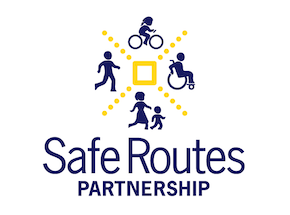A lot has happened in Washington in the past three weeks. We at the Safe Routes Partnership are gathering intel and as things become clearer, we will continue to advocate for funding and policies that support walking, biking and Safe Routes while centering the people within this movement. In the meantime, while things are in flux, we wanted to pass along information about how the current state of affairs may impact our issues, plus some actions you can take now.
Resource Library
Instead of the cheery “20th anniversary of Safe Routes to School” message we had planned to release, we take this moment to acknowledge how current events affect the Safe Routes to School movement, and most importantly the people who make up this field.
The Fastest Way to Fall in Love with a City Is on Two Wheels
The new year ushers in a season of change in Washington, D.C., and I’m not just referring to the snowfall in the nation’s capital! The 119th Congress was sworn in, and the change in presidential administrations will occur on January 20, 2025 – Inauguration Day. What does this all mean for federal transportation policy and funding?
Wishing for more funding for sidewalks, bike lanes, and Safe Routes to School? You’re in luck! Thanks to Representative Rick Larsen (D-WA), the Ranking Democrat on the House Transportation & Infrastructure Committee, there is $180 million in additional funding coming to states through the Transportation Alternatives Program.
Date: Wednesday, January 15, 2025 · Time: 1 p.m.–2 p.m. ET · Location: Zoom
Celebrating Nichole Hollis: A Champion for Safer, Equitable Journeys to School
Growing up in Tucson, parks were the heart of our family gatherings – a spacious spot for my large extended family to come together. I’ll have to admit that keeping track of everyone was a challenge! But it was always safe to call someone prima/primo (cousin) or Tío/Tía (aunt/uncle).
Ruby Bridges Walk to School Day Resources
The date may say 2024, but we are updating this page each year with new and exciting resources based on your feedback!
We are absolutely overjoyed to join you in celebrating Ruby Bridges and her incredible legacy throughout the nation! To make planning your event as easy as possible, we’ve curated a resource that will guide you every step of the way.
Visit the Ruby Bridges Merchandise Store
Order by October 17, 2025, for your November 2025 event
Now Hiring: Technical Assistance Manager or Senior Manager for the Safe Routes Partnership
Applications Due: November 4, 2024
It seems like every year, we open our September federal policy post wondering whether the government will shut down on October 1 due to Congress failing to pass a budget, and unfortunately, 2024 is no different! So, will the government shut down? Our crystal ball tells us it won’t.
We’ve developed state report cards which provide a snapshot of how supportive each state is of walking, bicycling, and physical activity for children and adults as of 2024.
We've developed state report cards which provide a snapshot of how supportive each state is of walking, bicycling, rolling, and active kids and communities.
August recess is upon us, which means lawmakers are back in their home states and districts. With the entire House up for re-election, and one-third of the Senate and The White House on the ballot in November, lawmakers and candidates are making the case for (re) election to their constituents.
Wednesday, September 4, 2024, 2 p.m. ET
Ruby Bridges Walk to School Day honors the living legacy of civil rights activist Ruby Bridges. Every November 14th, schools organize Ruby Bridges Walk to School Day activities to promote meaningful dialogue on activism, anti-racism, and anti-bullying. This webinar explores the history behind Ruby Bridges Walk to School Day and how to plan and implement impactful activities. We will also share an exciting opportunity to boost your celebration with a Ruby Bridges Walk to School Day mini-grant.
Speakers:
Kori Johnson, Program and Engagement Manager, Safe Routes Partnership
Cailin Henley, Safe Routes to School Coordinator, Transportation Planner, City of Tacoma, Department of Public Works
We’ve reached the mid-way point of the Bipartisan Infrastructure Law of 2021, which means it is time to take stock of how things are going and that transportation reauthorization conversations are already underway!


